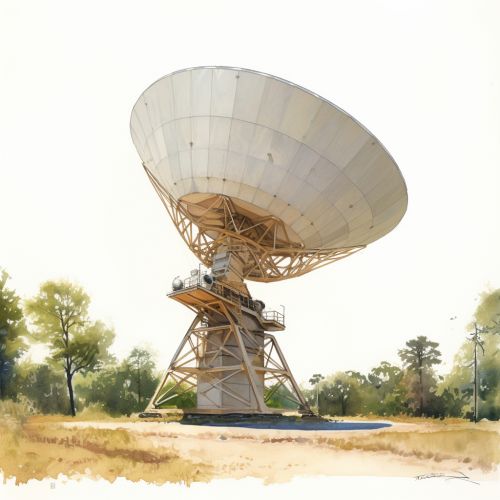Radar
Introduction
Radar, an acronym for Radio Detection and Ranging, is an object-detection system that uses radio waves to determine the range, angle, or velocity of objects. It can be used to detect aircraft, ships, spacecraft, guided missiles, motor vehicles, weather formations, and terrain. The radar dish or antenna transmits pulses of radio waves or microwaves that bounce off any object in their path. The object returns a tiny part of the wave's energy to a dish or antenna that is usually located at the same site as the transmitter.
History
The development of radar significantly influenced many aspects of twentieth century life. The technology was initially developed for military and defense purposes, and its use in World War II played a crucial role in many of the conflict's most significant events. The term RADAR was coined by the United States Navy in 1940 and is now widely used in English.
Principles of operation
Radar works on the principle of reflection where radio waves are transmitted through space and the echoes or reflections are recorded after being bounced off an object, giving information about its location and speed.
Radar range equation
The power Pr returning to the receiving antenna is given by the radar equation, depending on the transmitted power Pt, the antennae gains Gt and Gr, the distance to the target and the radar cross section, or RCS, of the target.
Types of radar
There are several types of radar, differing in the waveforms they use, their purposes, and their hardware configurations. Some common types include pulse radar, continuous wave radar, Doppler radar, and phased array radar.
Radar signal characteristics
Radar signals have certain characteristics that set them apart from other signals. These include frequency, power, and polarization.
Radar applications
Radar has a wide range of applications, including air traffic control, radar astronomy, air-defense systems, antimissile systems, marine radars to locate landmarks and other ships, aircraft anti-collision systems, ocean surveillance systems, outer space surveillance and rendezvous systems, meteorological precipitation monitoring, altimetry and flight control systems, guided missile target locating systems, and ground-penetrating radar for geological observations. Further applications include uses in human-made structures such as radar guns for law enforcement, radar speed signs, and radar altimeters.
Radar technology today
Today, radar technology is used in a variety of contexts, from weather prediction to law enforcement and even in the medical field. Developments in radar technology continue to contribute to its expanding range of applications.


